Top Ad Networks Alternatives to Google for 2025
Relying solely on Google’s App campaigns restricts format testing (no playables) and can trigger CPI volatility when auction dynamics shift across formats, pacing, and performance. Without alternatives, you can’t test playables, fight ad fatigue, or reach high-intent users beyond Google. That hurts install volume, burn rate, and retention.
Ad networks other than Google offer a broader reach across thousands of apps, more pricing stability, and flexible formats that enhance Day 1 engagement. With SKAdNetwork and contextual signals, they stay effective, even with tight privacy constraints.
In this blog, you'll learn what “ad networks other than Google” are and why they matter in 2025, see how the leading mobile‑gaming UA platforms stack up against Google UAC and who they suit best, then get clear criteria plus a concise, step‑by‑step roadmap to deploy and optimize them.
What Are “Ad Networks Other Than Google”?
When you look at ad networks other than Google, you’re referring to platforms that match advertisers and app owners outside of Google’s system. These networks buy and sell ad space from numerous apps and games, providing you with additional places to display your ads. An ad network aggregates ad inventory across multiple apps, selling impressions via real-time bidding (RTB) or private deals, allowing you to reach users outside of Google’s channels.
These independent networks aggregate ad slots from thousands of mobile games and apps, enabling you to discover fresh audiences that might be missed with Google alone. They offer large, varied ad pools, allowing you to maintain a high fill rate and avoid empty slots in your campaigns. By branching out to these platforms, you can reach a wider audience, reduce costs, and increase your installs in ways that extend beyond traditional Google channels.
Why Alternative Ad Networks Matter in 2025
Spreading your spend across ad networks other than Google lets you:
Smooth Cost Spikes: Utilize an ad mediation solution that leverages multiple networks in real-time, ensuring you never overpay when one auction heats up. By dynamically ranking bidders, mediation keeps your average cost per install steady, even if a top network’s bids surge.
Hands‑On Previews Boost Conversion: Interactive ad units let players “test‑drive” your core mechanics before installing. Studies show that playable ads can achieve up to 700% higher conversion rates than static or video formats, and drive 30–40% better Day 1 retention, because users know exactly what they’re getting.
Reach High-Intent Players: Contextual and engagement-based placements put your ads in front of gamers who are already immersed in similar content. Serving your creative in environments where players are primed for your genre leads to higher‑quality installs and stronger long‑term engagement.
Privacy-First Attribution: Apple’s SKAdNetwork 4.0, branded as AdAttributionKit in Apple’s ecosystem, introduces up to three post‑install conversion windows, hierarchical Source IDs, coarse‑grained conversion values, and web‑to‑app attribution. This privacy-first framework delivers aggregated install and re-engagement metrics without sharing any personal user data, enabling effective campaign measurement under iOS 14+ privacy settings.
Expanding beyond traditional channels is crucial for achieving stable costs, an improved user experience, and scalable performance in 2025.
With the benefits clear, here are some of the top-performing ad network options you can consider beyond Google Universal App Campaigns (UAC).
Also Read: SKAN 4 Implementation and Measurement Guide
Top Ad Networks Other Than Google for Mobile Gaming in 2025
1. AppLovin
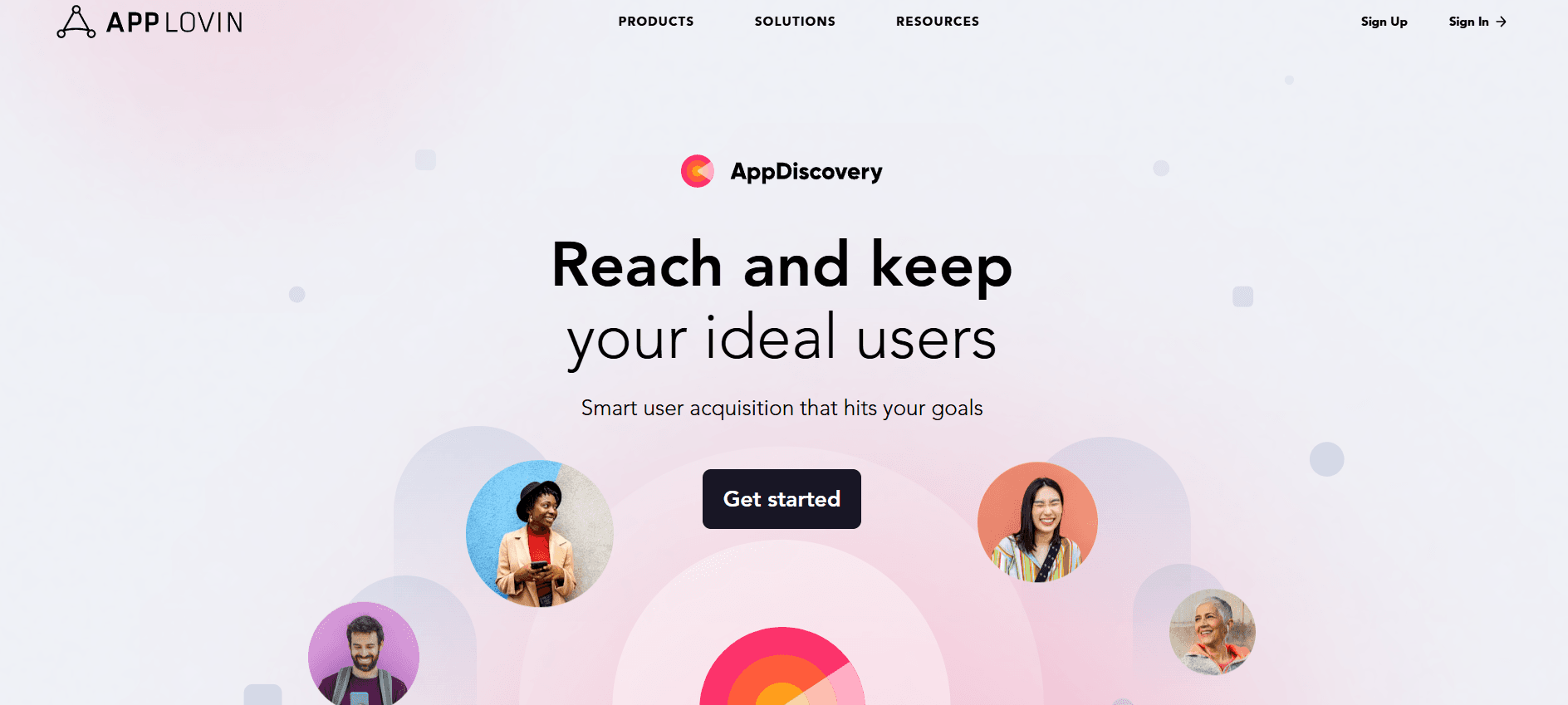
A performance-based mobile marketing platform powered by the Axon AI recommendation engine, AppLovin’s AppDiscovery automates campaign bidding and optimization at microsecond speed to match advertisers with high‑intent users across its global ad inventory.
Why It’s Strong for UA:
AXON AI analyzes in-game signals and user behavior to predict and bid on users most likely to deliver high retention and engagement, optimizing for post-install events and ROAS.
Dynamic creative optimization allows real-time testing and replacement of creative elements (thumbnails, videos, end cards) to maximize install quality and lower CPI.
How It Compares to Google UAC:
Google UAC groups creative assets into fixed bundles and automates most optimization, limiting granular creative testing.
Use SparkLabs to swap thumbnails, end cards, or CTAs with finer control than App campaigns’ bundle swaps.
Best For:
Advertisers of hyper-casual or mid-core games are seeking automated scale with granular creative and campaign control.
2. Smadex
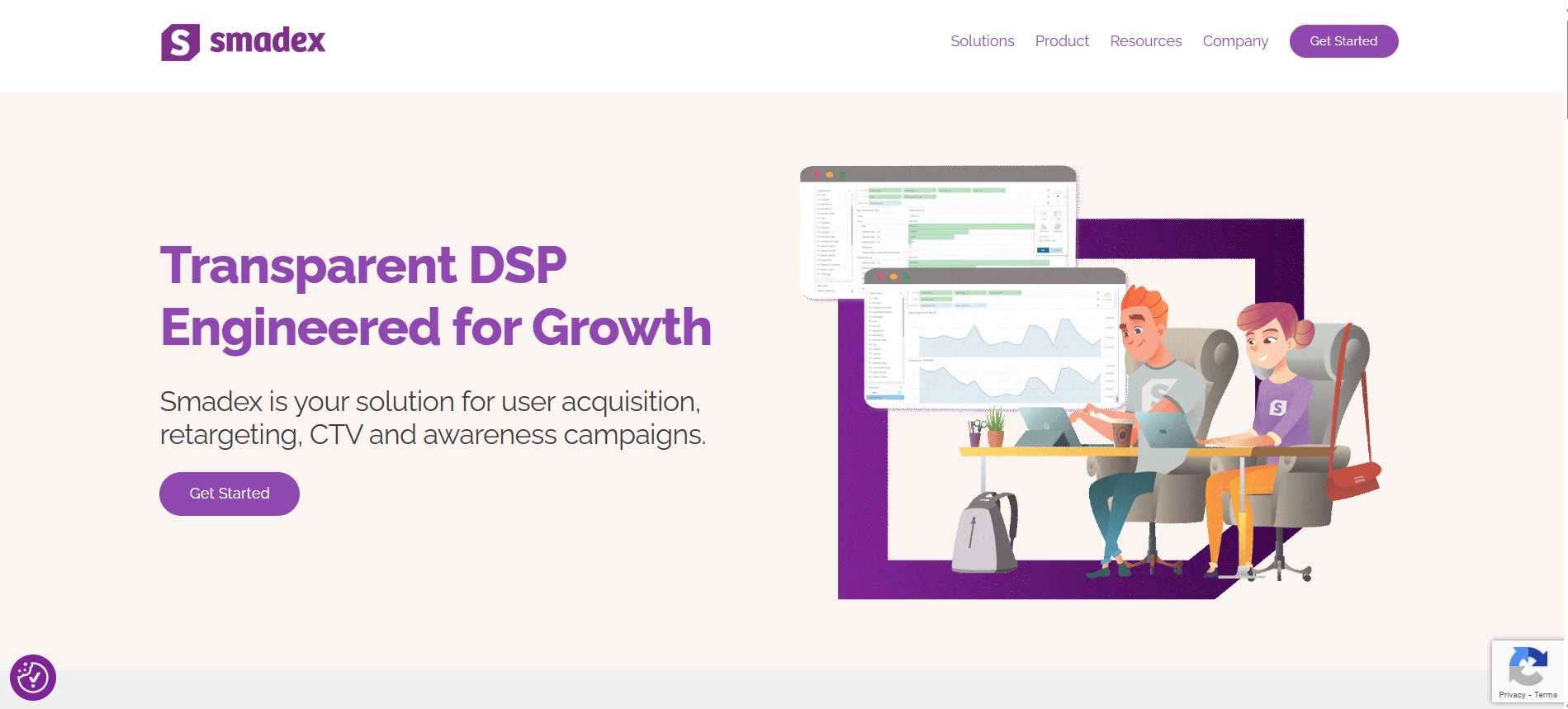
Smadex is a mobile-first programmatic DSP offering both private marketplace (PMP) deals and open real‑time bidding (RTB) for in‑app inventory. It provides an SDK that enables developers to monetize their mobile games and connect advertisers to global in‑app inventory.
Why It’s Strong for UA:
Supports PMP deals and opens RTB in a single platform, enabling premium placements and flexible campaign strategies.
Offers a SKAN‑ready SDK for privacy‑centric, optimized campaign measurement.
Features a Creative Studio for dynamic, contextually targeted ad formats.
How It Compares to Google UAC:
Google UAC does not support direct PMP deals or granular CPM/RTB control.
Smadex enables direct negotiations and hands‑on bidding, providing detailed breakdowns for campaign optimization.
Best For:
Advertisers seeking precise control over PMP and RTB bidding, advanced privacy compliance, and custom creative solutions.
3. Moloco
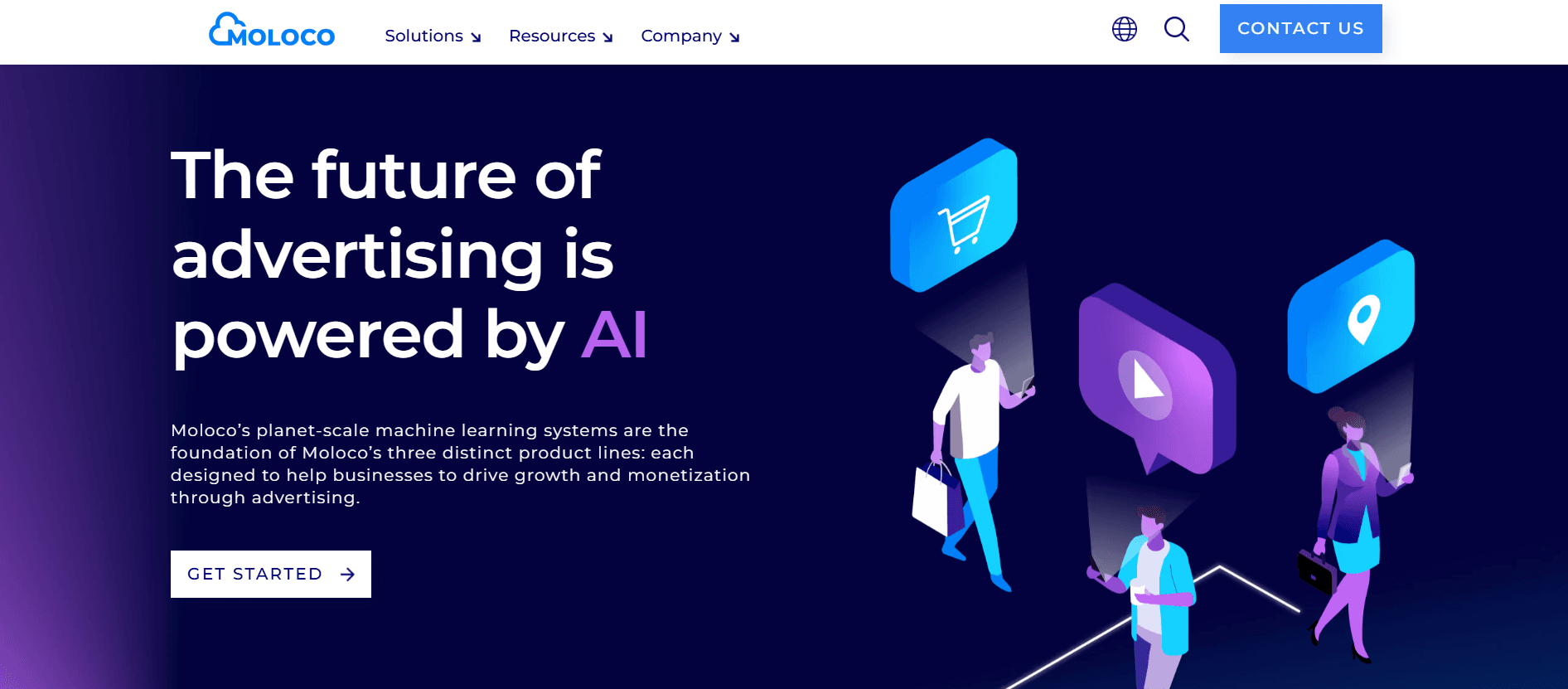
Moloco's platform is a performance advertising solution that uses machine learning for user acquisition. Its demand-side platform (DSP) forecasts user lifetime value and bids programmatically across open internet exchanges. The platform offers full transparency on ad placements and creatives, along with flexible measurement options, including incrementality testing, A/B testing, and multiple attribution frameworks.
Why It’s Strong for UA:
Moloco DSP predicts individual user LTV pre-bid, allocating budget to cohorts with high retention and revenue potential.
Focuses on long-term value and downstream engagement, rather than just initial installations.
How It Compares to Google UAC:
Google UAC primarily optimizes for installs.
Moloco also offers built-in incrementality testing to validate true lift across channels.
Best For:
Data-driven advertisers scaling across multiple markets who measure UA success by engagement and LTV, not just CPI.
4. Unity Ads
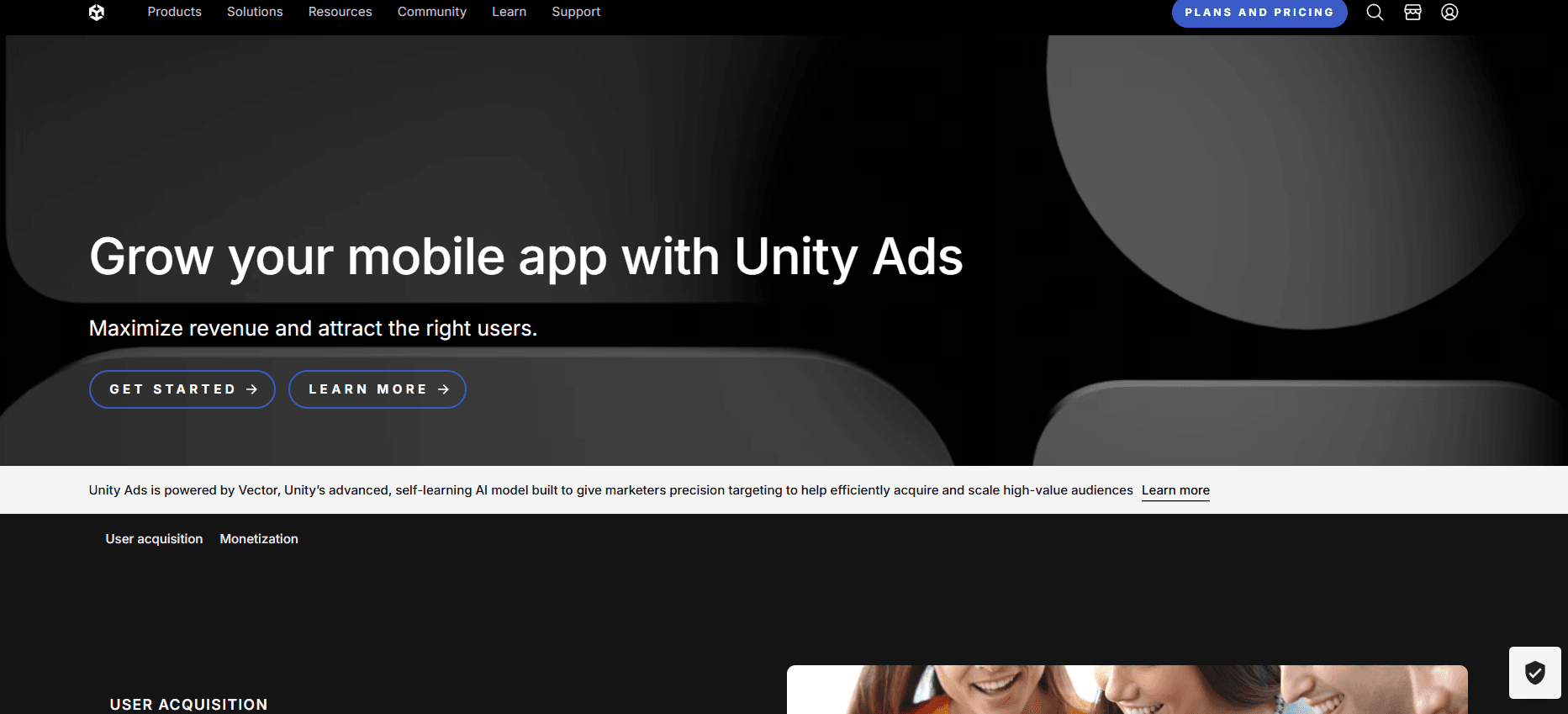
Unity Ads is a game‑focused ad network that you integrate via Unity’s SDK directly into your projects. It supports diverse ad formats, including rewarded video, playables, and end-cards, across over 2.5 billion devices worldwide. It is powered by Vector, Unity’s advanced self-learning AI model for precision targeting and bidding.
Why It’s Strong for UA:
Contextual delivery: Ads can be served at natural game breakpoints (e.g., level completions, in-game events), driving deeper engagement and higher completion rates compared to generic placements. Best practices from Unity’s video ads guide emphasize placing videos at these moments to maximize completion rates.
Robust supply & fair auction: Unity’s ad exchange grants access to premium inventory and competitive bids on 2.5 billion+ devices, ensuring both scale and quality.
AI-driven targeting: Vector leverages player data to adjust bids and placements, prioritizing users most likely to install and spend, which enhances campaign ROAS and scalability.
How It Compares to Google UAC:
Google UAC runs across Google’s app network but does not natively tie ad delivery to in‑game contexts. Unity Ads delivers at peak gameplay moments, which Unity reports can materially boost install conversion efficiency.
Best For:
Studios building with Unity or any advertiser who wants a seamless SDK setup, contextual ad placements in live games, and high‑visibility interactive formats optimized for player engagement.
5. Vungle
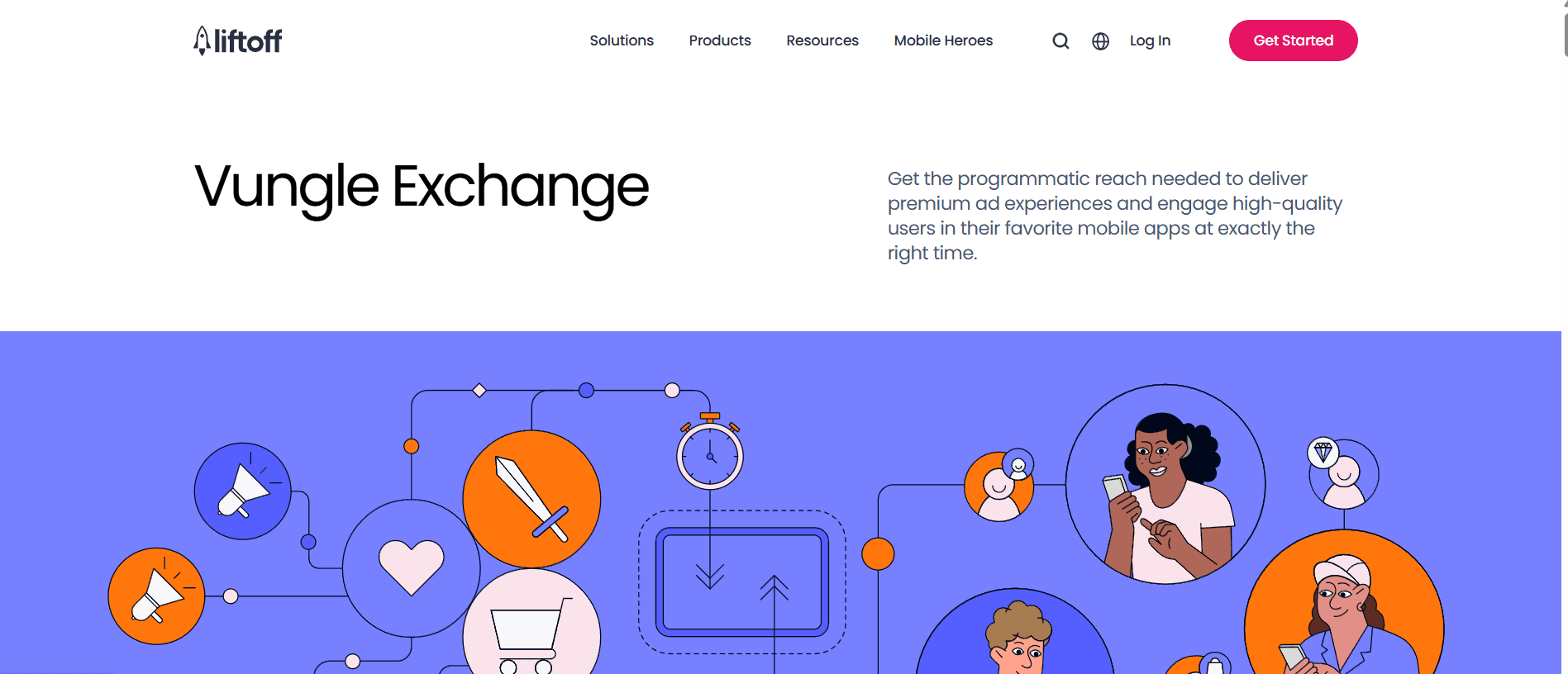
Vungle Exchange is an AI‑powered real‑time bidding platform focused exclusively on in‑app video, interactive, and playable ad formats. Its SDK is integrated directly into over 150,000+ apps across more than 150 countries, reaching over 1 billion mobile devices worldwide. Additionally, since Vungle merged into Liftoff in 2021, the Vungle Exchange now operates under the Liftoff umbrella as their specialized ad-tech offering
Why It’s Strong for UA:
Through Vungle’s Creative Studio, you can spin up multivariate and A/B experiments on video and playable assets directly in the platform, driving measurable lifts in install rate and D7 retention.
Real‑time device context (orientation, mute state, network speed) is passed from the SDK into bidding models, ensuring your bids land when users are most ready to install.
How It Compares to Google UAC:
Google UAC spans cross-app, cross-web, and YouTube placements, which is great for broad reach but often lacks the fine-grained, game-specific signals that power Vungle’s in-app video auctions.
Vungle’s sole focus on in‑app, and particularly in‑game, video/playable units reduces off‑target impressions, translating to stronger install‑to‑retention curves for game titles. Its SuperToken system passes orientation, network, and mute status for optimal viewability and completion.
Best For:
Advertisers of mid-core and large-scale titles who rely on video storytelling and want precise control over in-app ad delivery.
With a clearer view of the leading platforms, the next step is to understand how to evaluate them to your goals.
Key Criteria for Choosing an Ad Network in 2025
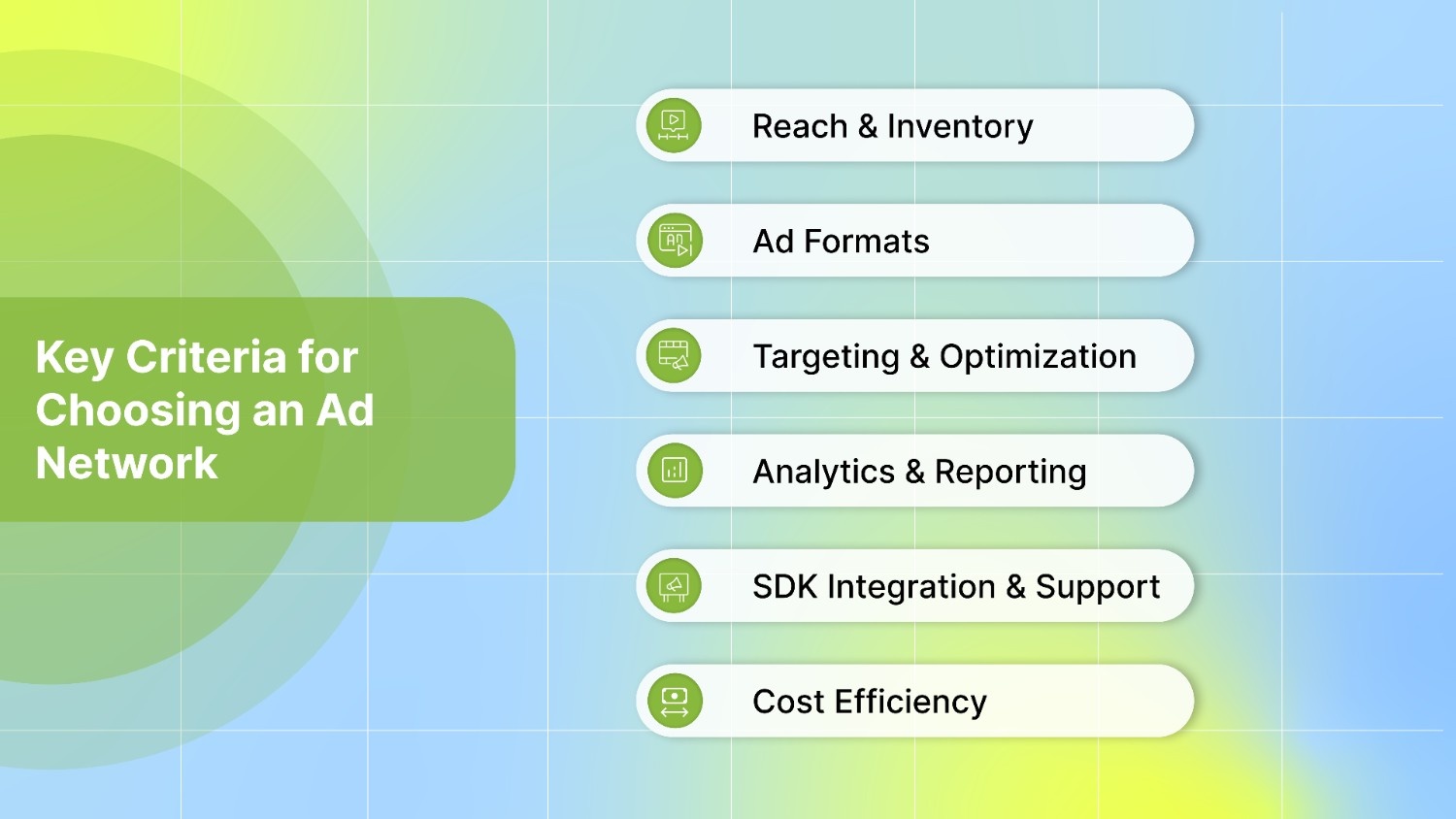
Before you pick an ad network for 2025, think about the features that matter most to you. These points will help you compare options and find the best fit for your app’s growth and budget.
1. Reach & Inventory
You need a network that delivers your ads on a vast number of active devices and across many partner apps. This range enables you to scale campaigns quickly and identify more of your ideal users.
2. Ad Formats
Look for support across the main ad types in mobile games, including rewarded video, playable, interstitial, and banner ads. Each format plays a different role, rewarded videos drive engagement, playables ads showcase gameplay, interstitials fit natural breaks, and banners offer constant visibility.
3. Targeting & Optimization
Prioritize networks with sub-second ML bidding (Axon, Vector, Moloco DSP) and cohort segmentation for LTV optimization. Automated event‑based optimization helps you reach users most likely to install and engage, so you spend less time adjusting bids and more time growing your audience.
4. Analytics & Reporting
Demand clear, up‑to‑the‑minute dashboards and full support for privacy frameworks. You want to see clicks, installs, revenue, and predictive lifetime value models in one place, so you can spot trends, react quickly, and prove ROI.
5. SDK Integration & Support
Select a solution that installs its SDK with minimal steps, provides comprehensive guides, and remains compatible with your development platforms to minimize integration time and technical issues, enabling faster campaign launches and smoother optimizations.
6. Cost Efficiency
Benchmark average cost‑per‑install (CPI) and cost‑per‑action (CPA) for your key regions. Compare eCPM ranges by format and region, and look for networks that let you leverage first‑party data and automated bidding to hit your CPI/CPA goals more reliably.
Keep these six points top of mind as you evaluate ad networks. By weighing reach, formats, targeting, reporting, integration, and cost, you’ll find the solution that best aligns with your growth targets and budget for 2025.
Once you’ve picked the right networks, it’s time to put them to work. Here’s how to set up and launch your campaigns effectively.
Also Read: AI in Mobile Game Marketing and Advertisement: Key Stats & Insights
Integrating and Running Campaigns
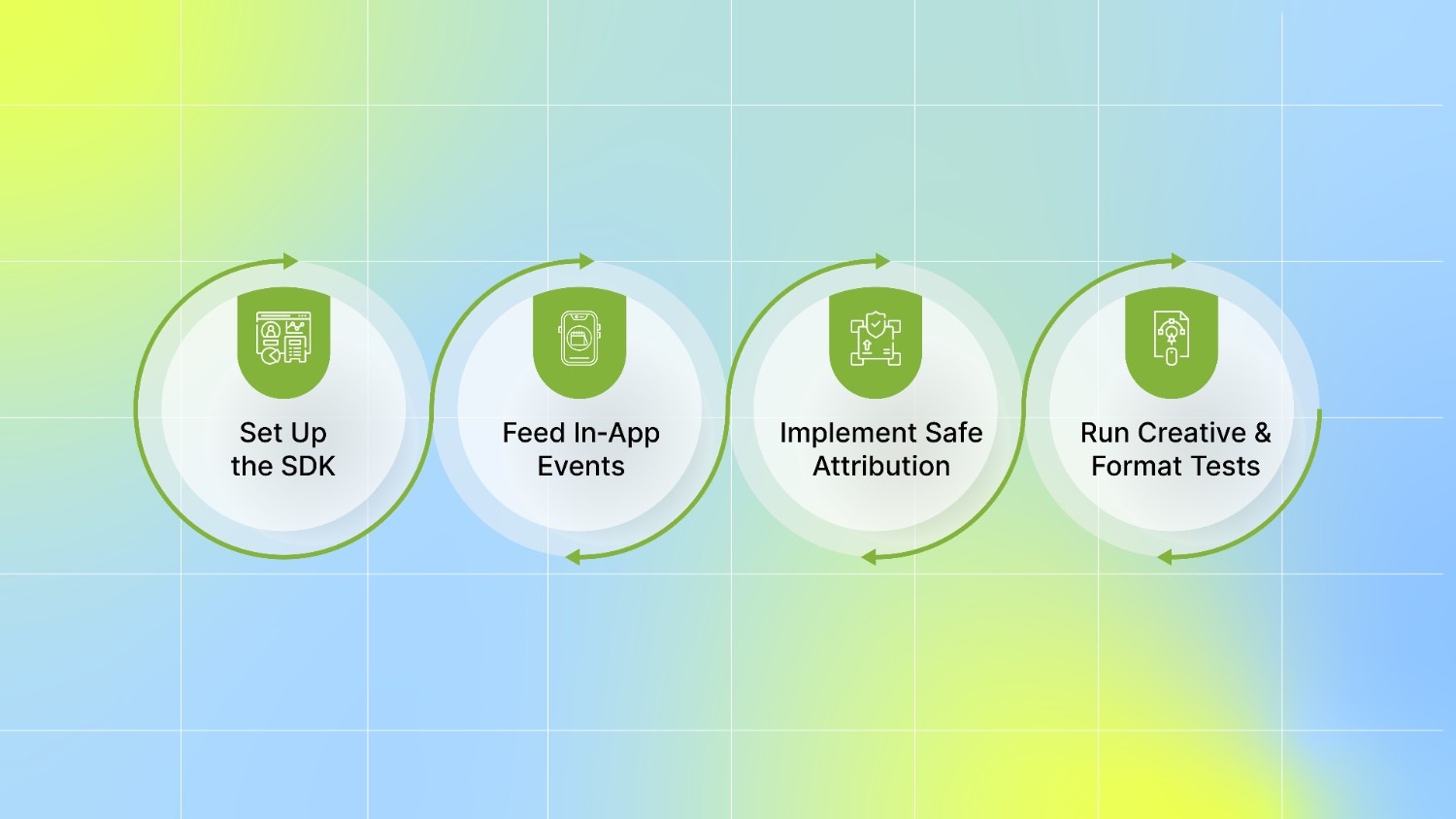
Here’s a clear, step‑by‑step guide to get your campaigns up and running in 2025:
1. Set Up the SDK and Mediation
Start by adding each ad network’s SDK into your app code. Then, enable a mediation layer to manage multiple networks from a single dashboard. Organize networks into priority groups or bidding stacks to control which network serves your ads first.
2. Define and Feed In‑App Events
Select a high-value in-app action, such as completing the onboarding tutorial or making a first purchase, and link it to your event optimizer. This allows the system to automatically focus bids on users most likely to trigger that action, helping you meet your cost-per-event goals without requiring constant manual adjustments. In SKAN 4, register Sponsored Events in your iOS Info.plist or Android manifest, then map them in your post‑install dashboard.
3. Implement Privacy‑Safe Attribution
With modern privacy rules, utilize the built-in attribution framework on devices (for example, SKAdNetwork on iOS). Add the required identifiers to your app’s configuration file, register installs when users engage with ads, and then review post‑back reports to see which networks drive your installs, all without relying on device IDs.
4. Run Creative and Format Tests
Don’t assume one ad style works everywhere. Use your mediation dashboard’s A/B testing features to split traffic across different ad designs, such as videos, interactive playables, or static banners. Monitor performance at the campaign or ad‑unit level, then shift budget toward the highest‑ROI combinations.
By following these steps, setting up SDKs and mediation, optimizing key events, using privacy-safe attribution, and thoroughly testing creatives, you will build an efficient, data-driven workflow.
Setup is just the beginning. Ongoing tracking and smart adjustments are what keep your campaigns profitable.
Campaign Success Measurement and Ongoing Optimization
To make sure you get the best results from ad networks other than Google, you need to measure your progress and fine‑tune your campaigns regularly. Start by tracking these core UA metrics in your Mobile Measurement Partners (MMP) dashboard:
Cost per install (CPI): How much you pay for each new install.
CPI‑to‑day‑1 retention: The percentage of installs that open your game one day after install.
Day‑7 retention: The share of players still active seven days in.
Lifetime value (LTV): The average revenue each player generates over time
Utilize AppsFlyer, Adjust, or Kochava for a single source of truth, which ingests MMP, SKAN, and server-to-server postbacks in a single dashboard. Their “My Dashboards” feature pulls activity, cohort, LTV, SKAN, and SSOT data into one place so you don’t waste time jumping between tools.
Once you have your numbers, review performance trends at least once a month to identify any trends or patterns. Look for rising CPIs, falling retention rates, or geos where quality declines. Then reallocate the budget toward the networks and regions that deliver the best mix of cost and player value.
By tracking your key metrics and adjusting your spend each month, you stay ahead of market shifts and get the most value from your ad networks other than Google.
Also Read: CPI, IPM, and ROAS Benchmarks for Optimizing Ad Spend
Conclusion
Broadening UA efforts beyond Google UAC stabilizes CPIs and unlocks more dynamic ad formats. Independent networks support interactive playables, in-context placements, and granular creative testing, which boosts early retention and engagement under the constraints of SKAdNetwork’s privacy policies.
Use six criteria to choose networks. Check reach and inventory. Look for varied formats, including rewarded video, playables, interstitials, and banners. Evaluate real‑time bidding and cohort‑based targeting. Demand clear analytics and privacy‑safe dashboards. Confirm easy SDK setup and solid support. Compare CPIs, CPAs, and eCPMs across different regions.
A streamlined rollout begins with SDK installation and mediation setup, followed by feeding key in‑app events into optimization algorithms. Privacy‑safe attribution frameworks should handle install measurement, while A/B tests across formats validate top performers. Routine tracking of CPI, Day 1/Day 7 retention, and LTV (reviewed monthly) guides budget shifts toward the highest-return networks.
This approach delivers predictable costs, richer creative experimentation, and quality installs, forming a resilient UA strategy for 2025 and beyond.
Ready to see these benefits for yourself with Segwise? Start your 14-day free trial today and take control of your user acquisition strategy with data that actually drives results.
FAQs
1. What key metrics should I track when moving from Google UAC to another ad network?
Focus on cost per install (CPI), Day 1 and Day 7 retention, and player lifetime value (LTV). These numbers show if you’re getting quality users at a reasonable price.
2. How hard is it to set up multiple ad networks in my game?
Most ad networks offer easy‑to‑follow SDK guides. If you use a mediation tool, you can connect to multiple networks simultaneously and manage them from a single dashboard.
3. Can alternative ad networks keep my install costs steady during busy bidding times?
Yes. Many networks and mediation layers spread your budget across partners in real time. That way, one spike won’t suddenly blow up your CPI.
4. Will non‑Google networks still work with Apple’s SKAdNetwork and other privacy rules?
Top mobile ad networks support SKAdNetwork on iOS and similar frameworks on Android. You can keep tracking installs without breaking privacy rules.
5. What ad formats do I get beyond what Google UAC offers?
You can run rewarded videos, playable ads, interstitials, banners, and even in‑game placements. A wider mix often drives more installs and better Day 1 engagement.
Comments
Your comment has been submitted successfully!